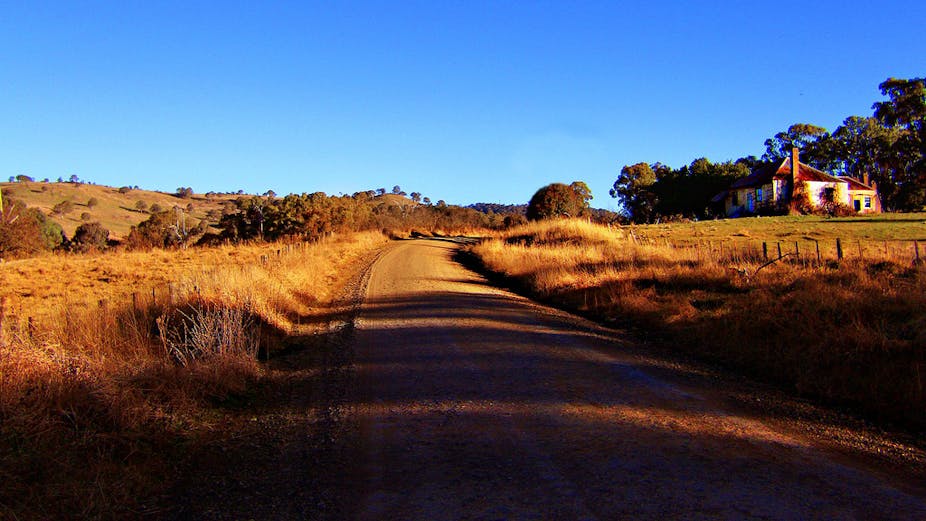More than half of the road fatalities in Australia occur on rural roads, and the greatest investment we can make to mitigate this is reducing speed limits on many of these roads. Indeed, fatal crashes and the cost of all road trauma on rural roads could be reduced by about 34% if speed limits reflected the type of road the vehicle was travelling on.
I recently completed an analysis that worked out the economically optimal speed for each road and vehicle type, that is, the speed that minimises the total costs of road trauma, travel time, air pollution emissions, and vehicle operations (principally fuel costs).
Reimagining cost
A key factor in my research was valuing road trauma at a much higher cost ($8.03 million per fatal crash) than has been previously used in Australia. The values I used reflect what society is “willing to pay” to prevent serious road trauma.
This approach is used in many developed nations such as United States, the United Kingdom and New Zealand, but not yet officially in Australia. It’s based on surveys that measure people’s preferences for reducing the risk to their lives versus benefits forgone (such as money invested in safety equipment). Internationally, it is now considered to be the most valid approach to calculating the cost of road accidents.
Current speed limits on rural roads in Australia reflect the traditional way of calculating road trauma cost, which is known as the “human capital” approach. This values each fatal crash at about $3 million. It essentially involves estimating the value of the productive output of people involved in accidents over their remaining lifetime
Investing time
There are periodic public calls for more time and effort to be invested in developing countermeasures to the rural road toll. In fact, the single most effective investment we can make is spending more time on our journeys on undivided rural roads by travelling at lower speeds.
The next most effective action is for the government to invest substantial funding in upgrading rural roads to divided road or freeway standard. The improved safety standard of these upgraded roads would allow the current speed limits of at least 100 km/h to be restored.

But in a country the size of Australia, extensive upgrading of undivided roads would take many years and, in the interim, lower speed limits on these roads are essential to significantly reducing the road toll.
Changing pace
According to my analysis, the optimum speed on rural freeways is 110 km/h for light vehicles, but only 95 km/h for trucks. On the lower-standard rural divided roads, the optimum speeds are 95 km/h for light vehicles and 90 km/h for trucks.
On undivided rural roads (about 75% of kilometres driven in rural Australia), they are 90 km/h for both light and heavy vehicles. But this reduces to 85 km/h on curvy roads, where fuel cost and emissions increase because of frequent deceleration to negotiate sharp curves.
In general terms, current speed limits on rural freeways (110 km/h) and other divided roads (100 km/h) are close to optimal for light vehicles, but should be at least 10 km/h lower for trucks. On undivided rural roads, the general speed limit of 100 km/h should be reduced to 90 km/h and sections with many sharp curves should be speed zoned at no more than 80 km/h.
The fruits of slowing down
Reductions in speed limits would likely be resisted and need to be enforced effectively, but they would produce a substantial fall in the rural road toll. They would also have a positive impact on fuel costs and emission, with only a 13% increase in travel time.
It may seem unfair to people who live in rural areas to lower their speed limits. But my analysis took increased travel time into account and the costs associated with it are not infinite. And the gains of reduced road trauma and emissions will mitigate some of them. The problem is that the gains are not tangible - at least not until road trauma affects you or someone you know.
We don’t need to just look to the government to reduce the rural road toll. We can make a difference ourselves by investing more time in our journeys on rural roads, particularly on Australia’s mostly undivided roads and when driving heavy vehicles.

